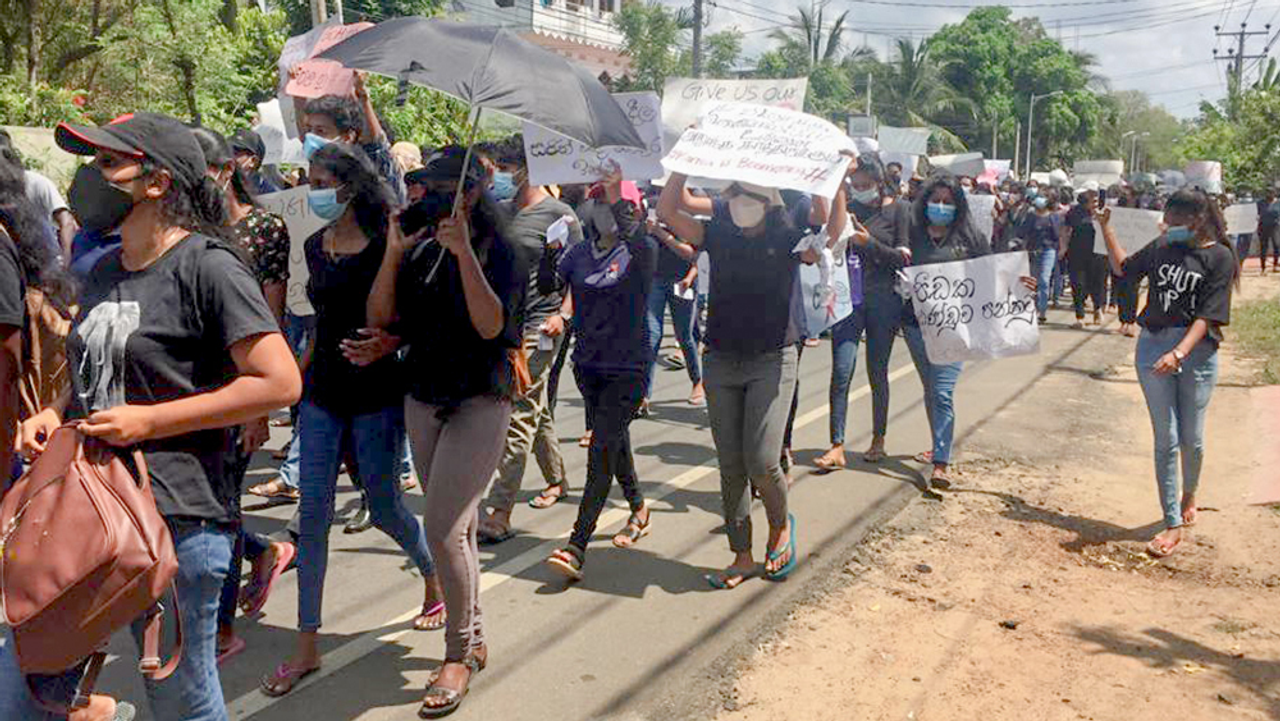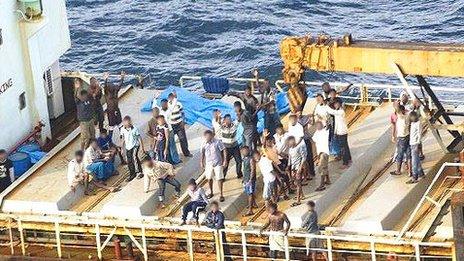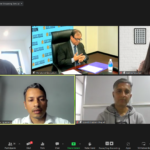Is India ready for the economic refugees fleeing from Sri Lanka to its shores?
An island nation of 22 million people and home to diverse cultures, languages and ethnicities, Sri Lanka is currently undergoing the worst economic crisis it has ever experienced in its history. While one cannot trace this fate back to a single action, promise or programme, a growing consensus among critics and experts around the root cause of this catastrophe is underway – economic mismanagement by various governments in a row that created a sweeping deficit in the economy. Exacerbated by the pandemic and the collapse of the lucrative tourism industry, the consequences of this unfortunate state of affairs are being borne the heaviest by the citizens of the island. Currently, they face unprecedented inflation, power cuts, loss of livelihood and shortages of essential goods and services. The response of President Rajapaksha’s government to mitigate this has been less than adequate, which has manifested itself in the form of violence and protests all around the country. Within such a dire context, India emerges as the only viable safe haven for most of the Sri Lankan economic refugees fleeing possible starvation in their country.

Separated by the Gulf of Mannar and the Palk Strait, the relationship between Sri Lanka and India is an old and robust one. Apart from a shared history and culture, the two countries are also intricately intertwined as a consequence of their geographical proximity and an appreciable Tamil community, the gravity of which became prevalent for the Indian government during the Sri Lankan Civil War that lasted for over two decades. Owing largely to this turmoil in the island nation, the relationship between the two countries came to be defined extensively by the influx of migrants from Sri Lanka to India starting all the way back in the 1980s. As of right now, more than 100,000 refugees continue to live in Tamil Nadu in sheltering camps, fully aware that going back would mean starting their life back from scratch, the prospects of which look bleak considering the ongoing economic turbulence in Sri Lanka. Even today, their documentation process is still underway, as they patiently wait to obtain a passport. Marked by violence, struggle and rehabilitation, these refugees continue to live a life tackling uncertainties around the question of their homeland and are devoid of an identity. More than 30 years later, India stands to brave another wave of refugees, economic more than political this time, but just as anguished as the ones the Indian government dealt with back then.
In March of this year, the first batch of Sri Lankan refugees arrived near the shores of the Gulf of Mannar, seeking asylum. Spotted by the Indian Coast Guard and eventually housed in the Mandapam Camp in Tamil Nadu, these refugees revealed that their main reason for fleeing to India is the rising cost of living. Keeping in mind the progressively worsening economic situation in the neighbourhood, the Indian government can expect an overwhelming influx of refugees across the Palk Strait sooner than later this year. This raises warranted questions about the capabilities of the Indian government to host them, and provide them with a new source of livelihood, while simultaneously navigating security and economic concerns of its own.
Despite being a strong advocate of international cooperation and action, India is not a party to the 1951 United Nations Convention on the Status of Refugees or the subsequent 1967 Protocol, a provision that protects persecuted persons outside of their home country. However, this does not absolve India from its basic commitment to provide humanitarian assistance to refugees. Hence, it continues to grant asylum to nationals from neighbouring countries and respects the mandate and non-refoulment principle of the UN High Commissioner of Refugees (UNHCR). Such an arrangement is not enough when it comes to housing and assimilating refugees in a host country. This is directly reflected in New Delhi’s approach to all questions pertaining to refugees.
Currently, the lack of refugee law in the country grants the State the right to declare any set of refugees as “illegal migrants” or trespassers under the Foreigners Act or the Indian Passport Act. While such a provision is contentious on many levels, a direct implication of it is the Indian government’s diverse approaches and protection standards for different refugee groups. For instance, starting in 2018, India has deported at least 12 Rohingya refugees back to Myanmar, where they are more than likely to face persecution, discrimination and violence, according to a Human Rights Watch report. At the same time, the Madras High Court dismissed the 2019 plea to deport a Sri Lankan refugee facing a human trafficking charge in India. While such an inconsistency around the treatment of Rohingyas and Sri Lankan refugees can be attributed to many factors, such as security concerns and negative communal sentiments against the former group, the lack of a national refugee law remains the most pertinent. Another stumbling block with regards to this indiscretion is the absence of sensitivity around the treatment of refugees, defined by the UNHCR as “persons forced to flee their home country because of a well-founded fear of persecution”. Since there is no clearly defined category of a refugee under Indian law, “illegal migrants” or “foreigners” are subjected to extreme procedures of screening to test the validity of their asylum claims, often degrading them and leaving their fate at the mercy of the State’s benevolence.

Substantially adding to the worry is the political dimension of the economic crisis. Given the Tamil solidarity shared between the Indian state of Tamil Nadu and the Tamil ethnic minority in Sri Lanka, some form of political pressure from the state’s Dravida Munnetra Kazhagam (DMK) government to aid the community was anticipated. Since January of this year, India has provided Sri Lanka with almost $3 billion in currency swaps, credit lines for essential commodities and loan deferments. In addition to this, the central government recently approved the Chief Minister’s request for providing humanitarian assistance and relief to the Tamils in Sri Lanka by the State of Tamil Nadu. However, concerns from the neighbouring country have been received regarding the limiting scope of this assistance. This is not to disregard the aid and assistance that the Indian government is supplying to the island nation. While New Delhi has been consistently emerging as the leading provider amidst the crisis, these efforts can be further enhanced by the development and implementation of comprehensive refugee law. Considering the geographical accessibility of the state as well as its prior experiences with economic and political migration with the refugees from the island, the Lankan Tamil issue remains a sensitive one in the state. Keeping this in mind, it is prudent to expect further economic and financial obligations for India with regard to the Sri Lankan crisis.
Currently, with the lack of a legal framework around the question of refugees, the Indian state struggles to determine its course of action in matters relating to migration, asylum and sustainable deportation. The impact of such ambiguity is twofold. Firstly, it does little to help India shield itself from security threats and concerns, especially along its northeastern border and shores of Tamil Nadu. Since its Independence, India has been deeply affected by illegal migration, infiltration and acts of terrorism. Given that it shares its boundaries with eight sovereign states with significant domestic issues of its own, it is prudent to expect a constant influx of refugees and asylum seekers in the country. The most effective way to tackle this is through a strong and decisive national refugee law, which eases the administrative load on the government while simultaneously streamlining the flow of migrants into the country. Secondly, uncertainties around the treatment of persecuted persons in India create an unsafe and hostile image of the country for asylum seekers and refugees. While national security risks of the State are valid and carry significant weight, they do have sweeping tones that are neither transparent nor coherent. Such official rhetoric feeds into the national sentiment around migrants, further alienating them.
This is not to say that the national legal framework is completely devoid of any standards of protection for these refugees. The Indian constitution lays down numerous constitutional rights that can be deployed to protect these refugees, such as Article 14 and 21 – Right to Equality before Law and Protection of Life and Liberty respectively. However, these judicial interventions are not sufficient or effective enough to fill the legislative gaps. Instead, the most potent solution stands to be the development and implementation of just and uniform refugee law. Such a law must reflect the appreciation of the special circumstances under which a person comes to be a refugee along with substantial provisions for the absorption of persecuted persons into the country. Additionally, it should ideally be the reflection of the perfect balance between India’s international and national obligations – a commitment to the human rights instruments and seamless assimilation of refugees into society. An advanced engagement with the issues faced by women refugees would be ideal, since this subgroup of refugees, being the most vulnerable, risks losing their access to education and healthcare first. Finally, a clear definition of the category of refugees, differentiating it from asylum seekers, migrants and foreigners, will go a long way in navigating India through these muddy waters.
About the Author:

Ananya Sood is a Writing Fellow with the Fellowship for Freedom in India. She is a final year student of International Relations at Shiv Nadar University.




Leave a Reply